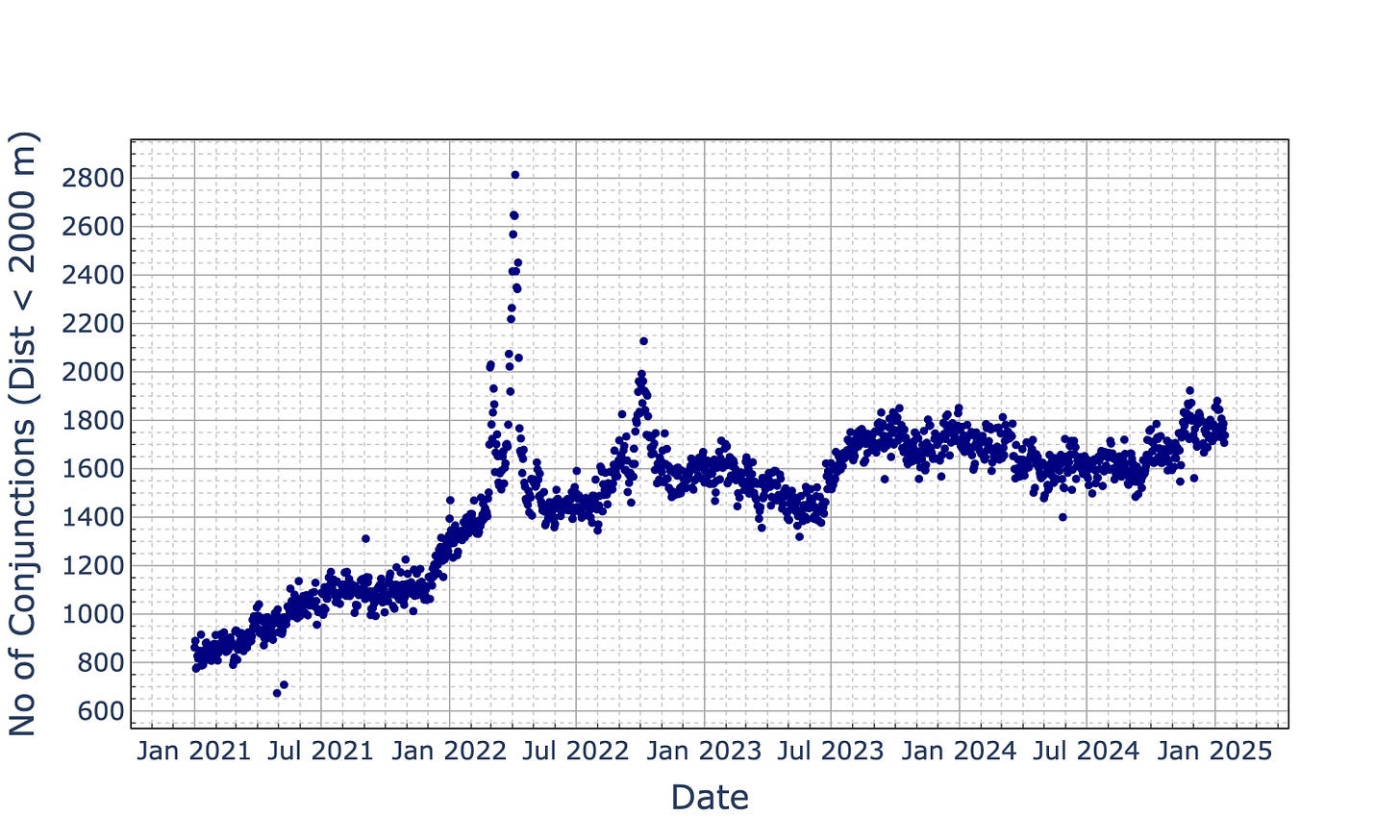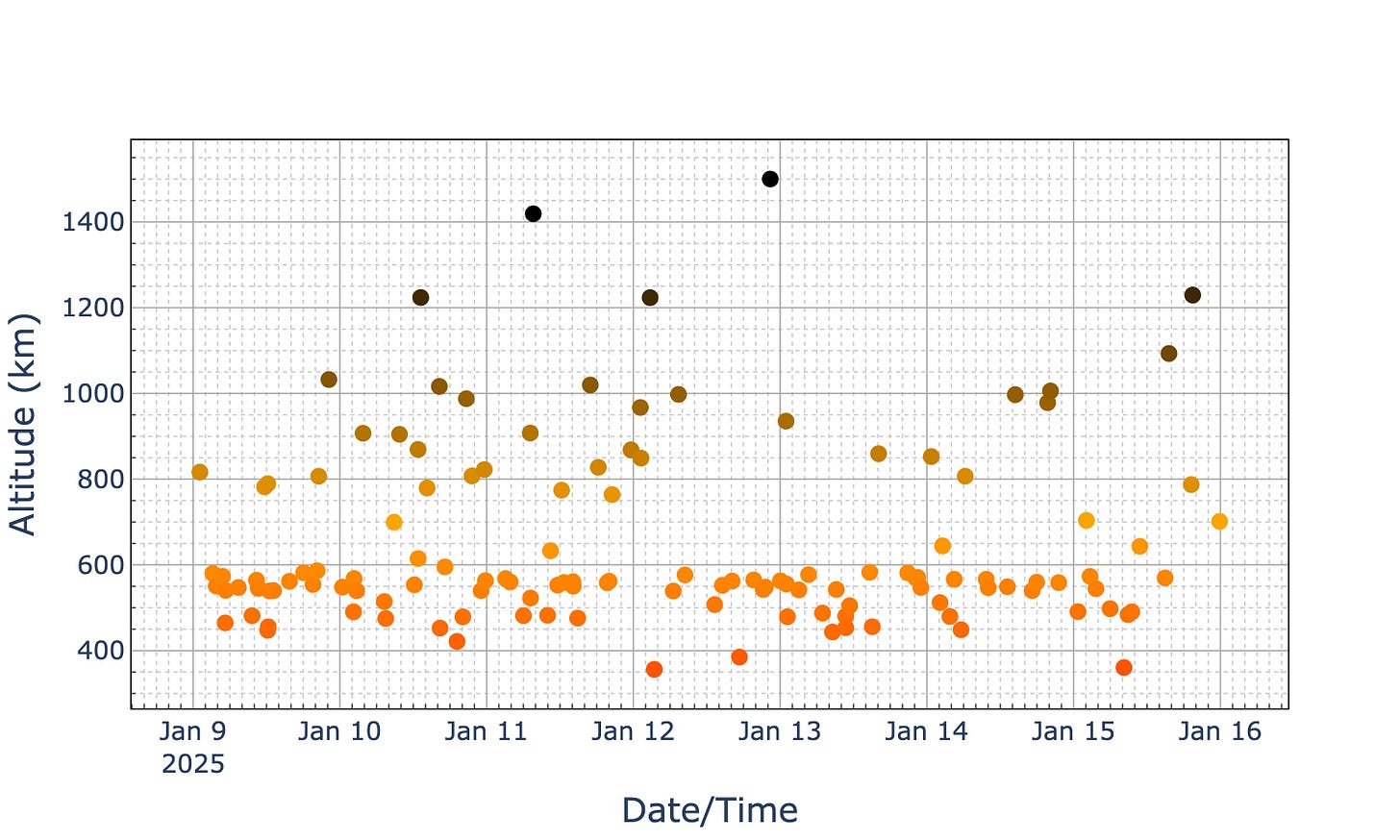Weekly 200 m Conjunction Report - Jan 15th 2025
There were 130 conjunctions this week. A Starlink satellite meets a recent Russian unnamed satellite

Summary
There are 130 conjunctions for 200 m or less for the week 2025-01-09 to 2025-01-15
The majority of conjunctions occur at altitudes less than 600 km
The closest conjunction of the week was 26 m between Starlink-5226 (ID: 54056) and Object T (ID: 57183) at a geodetic altitude of 547 km on 2025-01-09
At any point you can get this data yourself by going to https://overhead.docksat.space and signing up for a free account using the Log In button ( then Create Account ). If you want to download the complete history and other data you can also sign up for a subscription
For context, all of these objects recorded by the Overhead app are moving at velocities of 5 km/s upwards so a conjunction of 50 m represents a timeframe of 10 ms. Relative velocities can be over 10 km/s. There would not be time to make a significant manoeuvre, if at all.
Total Counts
The total conjunction counts produced by the Overhead web app relating to Payload-To-Other conjunctions excluding payloads to payloads in their own family (ONEWEB to ONEWEB for example) is shown below.
The relative conjunction distances and altitudes where they occur (note distance axis is reversed) are shown below:
Data for the graphs can be found at:
Overhead Weekly Report - 2025-01-15
Closest Conjunction
The closest conjunction this week was 26 m between Starlink-5226 (ID: 54056) and Object T (ID: 57183) on 2025-01-09 at 07:24:10.78 UTC at a geodetic altitude of 547 km, position 24.0° S, 150.6° W
Object T is a satellite launched from Russia in June 2023. As is typical of objects such as these, they are publicly tracked but there isn’t much that is known about them as the information doesn’t appear to be shared with the 18th Space Squadron. However, it sees a lot of Starlink satellites according to the calculations. It has a very busy history.
Starlink-5226 was launched late October 2022 and reached operation altitude in a few months.
Both satellite data is shown below:
Altitude:
Overhead:
Payload family percentages (i.e. what payload family makes up the most conjunctions):
In the case where an unnamed Object (yet known to be Russian) meets a known satellite, such as Starlink, there may have been a prediction from a few days earlier that this was about to occur. The question is who do you get in contact with? Do you get on the phone to the Russian government, in general? Who takes responsibility for moving the satellite? Is it all on SpaceX? So many questions…
Summary (again)
There are 130 conjunctions for 200 m or less for the week 2025-01-09 to 2025-01-15
The majority of conjunctions occur at altitudes less than 600 km
The closest conjunction of the week was 26 m between Starlink-5226 (ID: 54056) and Object T (ID: 57183) at a geodetic altitude of 547 km on 2025-01-09
As described in What is Overhead? these conjunctions are calculated from projected positions for a 24 hour period using satellite TLE data from Space Track.org where data is updated each day. Conjunctions are filtered to leave Payload-to-Other types, excluding payload families to each other. Data starts from Jan 1st 2021 until now. Take from that what you will and use at your discretion.








